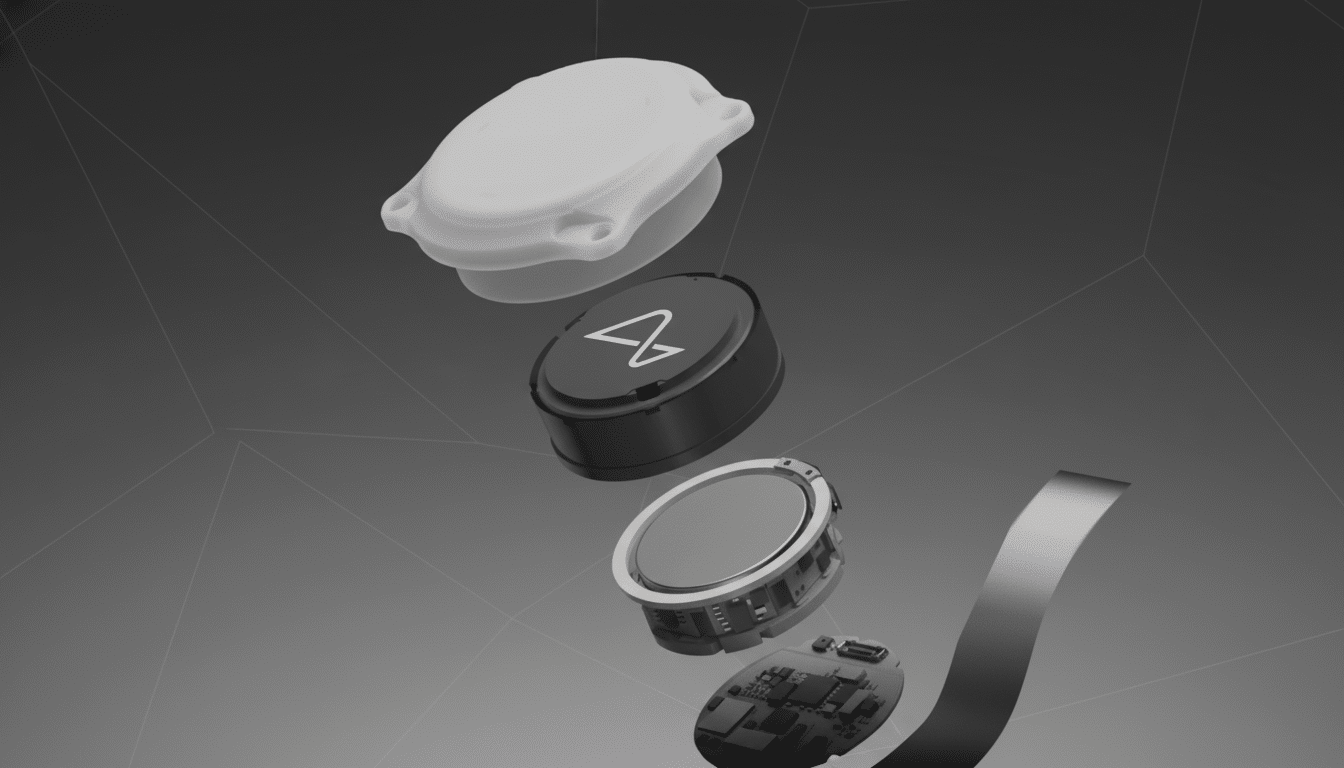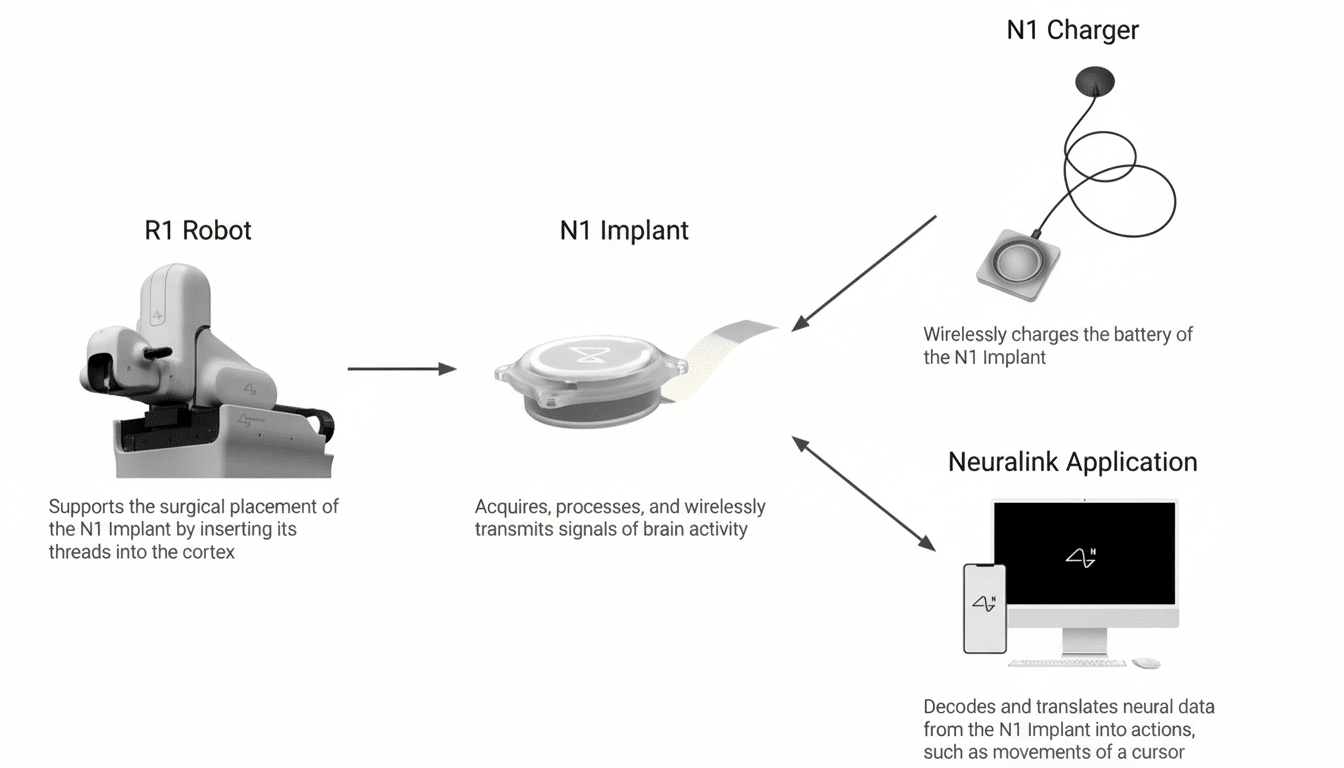Neuralink’s initial brain-computer interface trials have spurred overwhelming demand, with an estimated 10,000 individuals now said to be on a waitlist for its N1 implant. That wave of interest is meeting a practical bottleneck: There are not enough neurosurgeons, or surgical hours, to expand. The company’s response is clear — robot surgery tailor-made to plunge hair-thin threads into the brain with sub-millimeter accuracy.
A Waitlist Developed From Early Patient Signals
Neuralink has implanted its device in a small group of clinical-trial participants, with the leadership indicating that about a dozen patients have received it so far and with plans to approximately double that number soon. The usage data, meanwhile, are striking: trial participants reportedly use the device for about 7.5 hours a day on average and at least one patient clocks in more than 100 hours of use per week. That kind of uptime can mean reliable cursor control, communication and everyday computing for people with spinal cord injuries or ALS who qualify for the trial.

The N1 implant communicates with the company’s Telepathy platform, which can decode neural activity associated with a desire to move a limb or speak, and then send commands wirelessly to a computer. Company executives have also hyped end-to-end interaction latency that can feel faster than the brain-to-muscle response time you’re accustomed to, an eyebrow-cocking data point that gets at why interest in the technology continues to swell.
Why the Robot Is at the Core of Scale for Neuralink
Neuralink developed its own custom surgical robot to perform the most critical aspect of implantation: threading dozens of ultrafine electrodes through a skull and into the cortex, without hitting blood vessels. Such micron-level placement speed and consistency are even beyond the most elite human dexterity. It’s also where the company says it can stand out from rivals with the vertically integrated approach of hardware, software and tooling.
Still, this is not a “press go and walk away” thing. Surgeons perform the craniotomy, place the device, oversee robotic insertion and monitor anesthesia and safety throughout. As a number of neurotech leaders have said, the robot does not automate placing the delicate threads — surgeon judgment dictates everything else.
The Workforce Reality Check Facing BCI Expansion
The United States has some 3,700 practicing neurosurgeons, according to estimates from the American Association of Neurological Surgeons. Even if a small portion of those were focused solely on the implantation of BCIs, their surge capacity was likely to be overwhelmed by procedures and after-care lasting several hours. That’s the scalability cliff that Neuralink is trying to leap with automation: standardizing steps, reducing surgical time, and enabling teams to proceed more safely and consistently at a high throughput.
Consider a conservative scenario. If 20 centers were able to do one implant on each of the five weekdays, that could be roughly 5,000 a year — enough to chew down a 10,000-person waitlist in about two years. We’re a long way from that being reality, but it’s part of why an industrial-grade, robotic workflow is mission critical if BCI is ever to become anything more than boutique medicine.
Safety, Regulation, And Clinical Guardrails
Although they are exciting, these devices are still investigational. No BCI implant — including Neuralink’s — has marketing approval from the U.S. FDA. Neurosurgeon leaders have repeatedly stressed that the risk of invasive brain surgery makes it a profile that needs careful patient selection; all tests must be based on individuals who are severely impaired and not healthy volunteers.

The road to regulation is both challenging and straightforward: show safety and reliable functional benefit, establish strong manufacturing and quality systems, demonstrate durability over time. Which is why tight surgical supervision and vigilant follow-up are not optional, robot or no. Industry executives in neurotech across the board hope that an initial approval is a matter of years, not months.
Rivals, Routes, and the Role of Robots in BCI Scale
Neuralink isn’t alone. Synchron is going the endovascular route, inserting an electrode array through blood vessels as a minimally invasive option. One company called Precision Neuroscience is working on thin-film cortical arrays that would rest atop the brain. Paradromics and Blackrock Neurotech are developing high-channel-count systems with such data richness in mind. Approaches vary, but the problem of scaling rhymes: safe, repeatable implantation at volume.
Here, robots are table stakes. Surgical platforms for epilepsy and DBS like ROSA or Neuromate already advance trajectories highly precisely. The Neuralink system takes this a step further by managing the insertion of the flexible threads and avoiding vessels to fit its custom implant. Whether that VIP perk will translate to speedier, safer throughput remains a question of how fast the waitlist can dwindle.
What to Watch Next as Robot-Assisted BCI Scales
Three indicators will show if robot-driven BCI can scale:
- Surgical time per case
- Complication rates versus standard neurosurgical benchmarks
- The number of centers trained to operate the protocol
Throw in patient-reported outcomes — hours of daily use, speed of communication, time to complete a task — and we’ll find out if early enthusiasm proves true when hundreds of implants turn into thousands.
The promise is huge: to give those who’ve lost motor function digital independence. Satisfying that demand will take not just a clever implant, but a production-grade surgical playbook. That’s the headline; robot surgeons, well then that could be the only feasible lede to make it accessible at scale.

